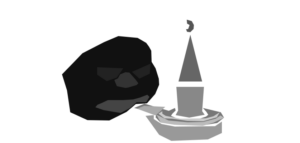While I’m still looking at various bits of the engine, here’s yet another post about the part I more or less understand.
Overall, the engine was designed to be portable as it was supposed to work both on little-endian PC and big-endian Mac. That is why PC version essentially uses just minimum OS and DirectX interfaces to perform the necessary stuff (event tracking, drawing and audio playback; multi-player game would require an additional library for the network stuff but since it was cut we’re not talking about it).
The engine essentially draws the 3D world by default and maintains a stack of windows (e.g. a death screen, a main menu or various dialogues) to be shown over it. Windows are organised as a rectangle on the screen with optional background (loaded from GRA file) and a collection of widgets on it. Each widget is essentially a rectangle inside window with a custom code to draw it and maybe handle some custom events (for example, report when it was clicked). Essentially the main screen class tracks keyboard and mouse events and passes them to the current window. It also handles redraw events (by calling a corresponding function from the window interface) and when a widget is clicked, it also invokes a function to tell the window which widget was clicked and to act on it. Also if a widget specifies tooltip/hint text it will be drawn too when a mouse stays in certain point long enough and there’s a widget interface function provided. It sounds rather simple but seems to work good enough for the game, even drag-and-drop combining items in inventory.
Widgets may be of different type: buttons (background from GRA plus button caption loaded from QGM and rendered with one of QGF fonts), mere image or text label, radio buttons, input boxes (black rectangle plus rendered text) and even model rendering (for a character window).
Windows are mostly hard-coded in the engine with all their creation and handling logic, including room-specific ones like the Adventurers Guild bulletin board, the crane controls on the Scientific Island, Wheel of Fortune minigame in Dead Parrot Inn and such. Nevertheless the engine provides an interface to create a dialogue window with up to four buttons so some rooms should be able to construct their own (maybe, a quiz for Scientific Island?).
Slowly (very slowly!) more and more details about the engine become known to me but the core of the game (3D world rendering and interaction) is terra incognita to me. Let’s see if I ever get there…



